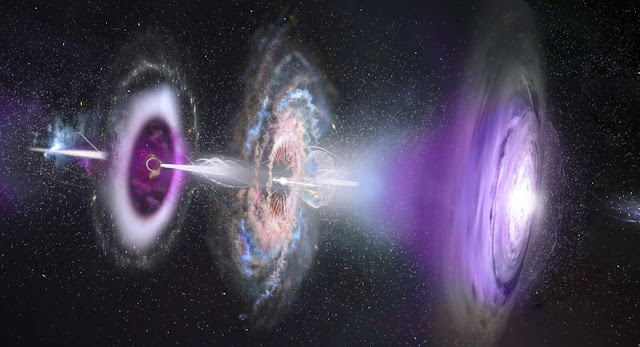Researchers estimate that there are 40 billion black holes in the universe.
The observable universe contains around 40 billion billion (4×1019, or 40,000,000,000,000,000,000) black holes, according to a newly published estimate. If you can’t get your mind around that figure, join the club – but another way of putting it is that approximately 1 percent of the “ordinary” matter in the universe is contained in the form of black holes.
The figure is published in The Astrophysical Journal and is the work of Scuola Internazionale Superiore di Studi Avanzati, Italy, PhD student Alex Sicilia and supervisors, along with a large team of collaborators.
Sicilia didn’t actually count the black holes of course – although if his PhD was like most, he probably felt as if he had by the end. Instead, the research relied on the fact most black holes are formed when stars with masses more than 20 times that of the Sun reach the end of their lives. The result is an object with a mass 5-160 times that of the Sun, so dense not even light can escape its mighty gravitational field. By using estimates of the number of stars of appropriate mass formed from the Big Bang to now, Sicilia could put a figure on the number of black holes left behind.
The authors explain in a statement; “This important result has been obtained thanks to an original approach which combines the state-of-the-art stellar and binary evolution code SEVN developed by SISSA researcher Dr Mario Spera.” Into this was fed current estimates for galaxies’ properties, “Especially the rate of star formation, the amount of stellar mass and the metallicity of the interstellar medium (which are all important elements to define the number and the masses of stellar black holes).”
As well as calculating the number of black holes, the work provides an estimate of the distribution of their masses. This allowed the authors to calculate that 1 percent of the baryonic matter in the universe is locked up in stellar-sized black holes. Baryonic matter, sometimes referred to as “ordinary” matter, is composed of familiar protons and neutrons and stands in contrast to dark matter, whose composition is unknown, and dark energy, which is even more mysterious.
Supermassive black holes that lie at the heart of many galaxies represent a rounding error in terms of total black hole numbers, but are individually millions of times more massive. The authors indicate they will be considering their cumulative mass in a future paper, but expect it to be more than 100 times less than that in smaller, but more numerous, stellar black holes.
Dense star clusters are thought to sometimes give birth to black holes of not much more than stellar mass through other processes, but the authors also leave this to a future paper. There is still some uncertainty as to whether intermediate-mass black holes exist at all, and their numbers are probably relatively small.
Although black holes were theorized in the 18th century, the first discovery wasn’t considered confirmed until 1990. We’ve come a long way since then, and the identification of gravitational waves from merging black holes has created an opportunity to estimate their frequency and size in the local universe, giving some rigor to calculations like these.
Source:Astrophysical Journal
Do not forget to share your opinion with us to provide you with the best posts !




0 Comments